#dicots
Text

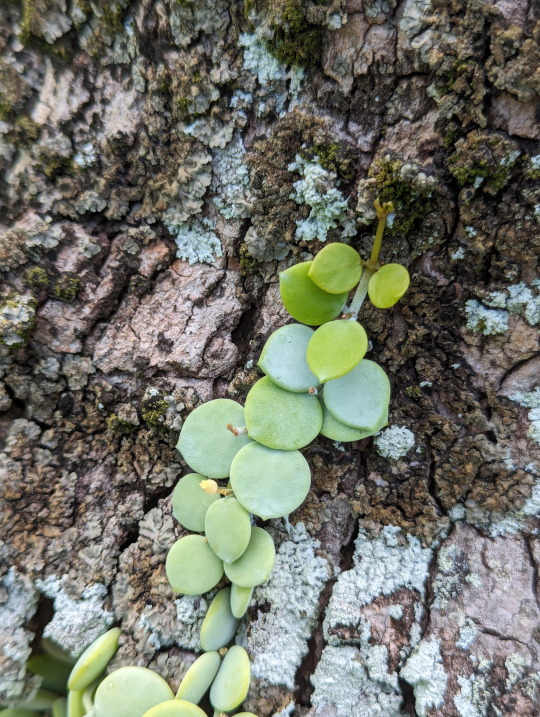
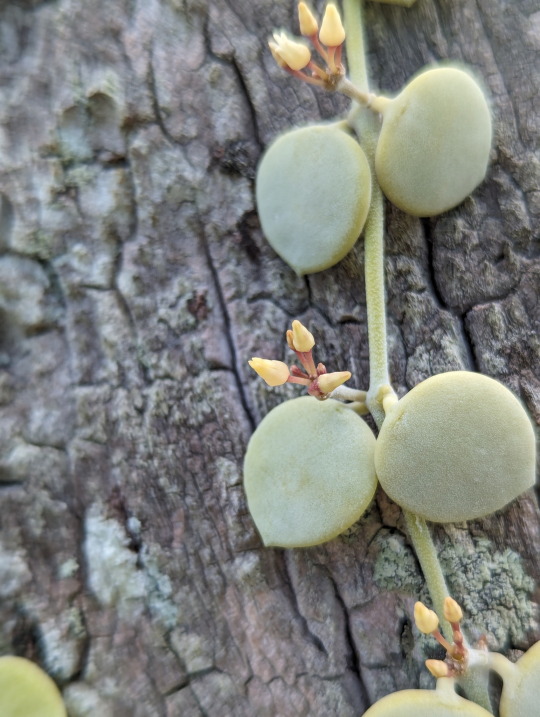
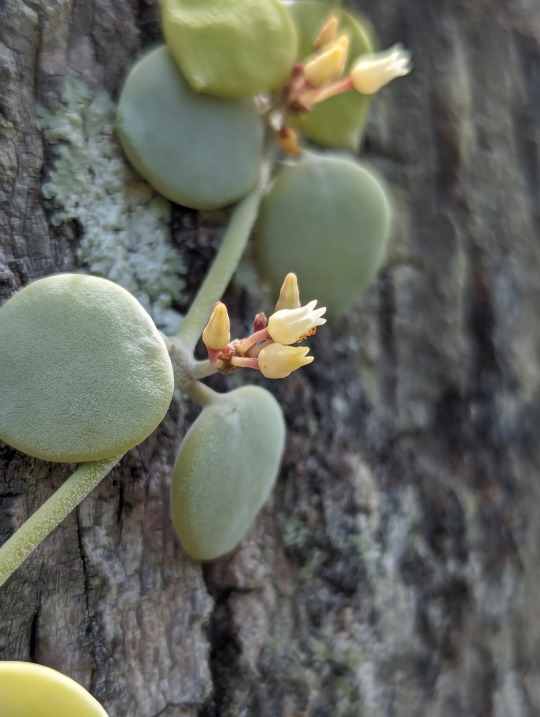

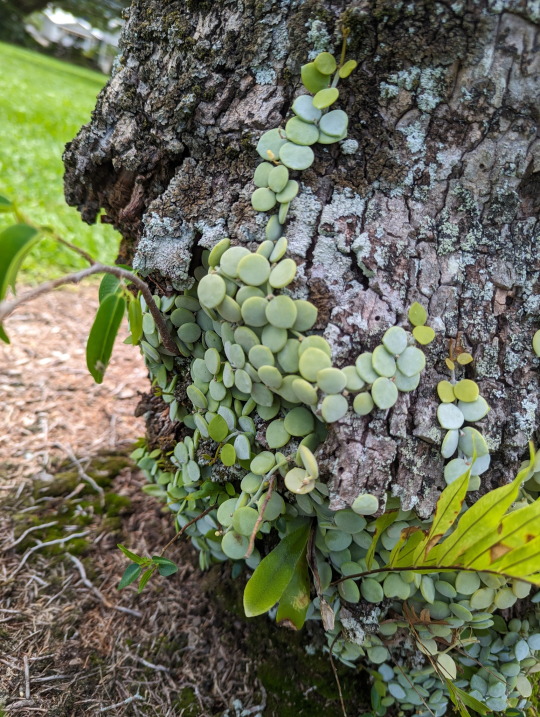
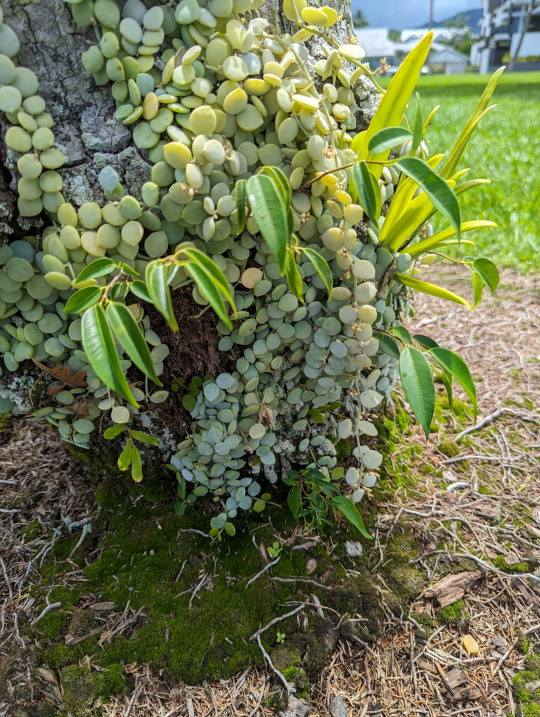
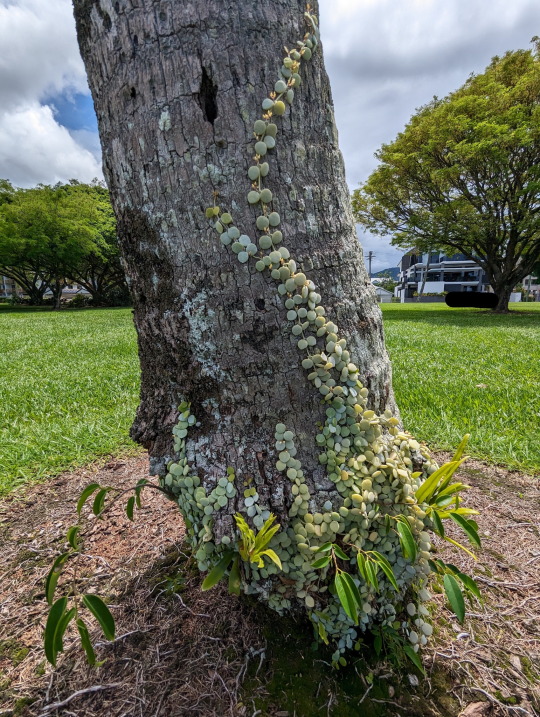
Beautiful button orchid growing on a palm tree.
17/01/24 - Dischidia nummularia
QLD:WET - Cairns
#nature#Dischidia nummularia#Button Orchid#Plantae#plants#botany#Milkweeds#Gentianales#Magnoliopsida#Dicots#Angiospermae#Flowering Plants#angiosperms#Tracheophyta#Vascular Plants
88 notes
·
View notes
Text

Violet Wood Sorrel
Oxalis violacea
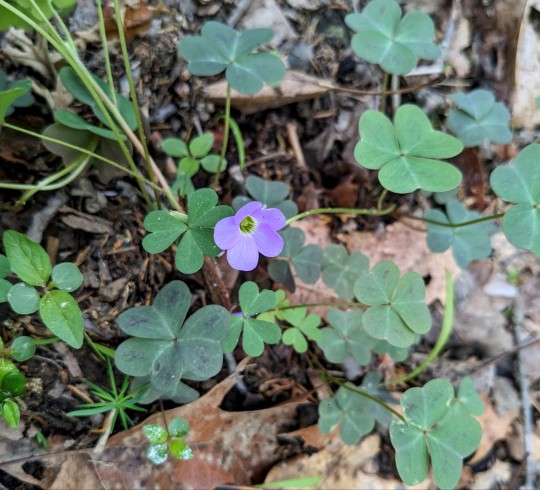
This beautiful oxalis violacea with showy, soft violet blooms is a perennial species native to the eastern and central United States.
May 12th, 2023
Jefferson County, Missouri, USA
Olivia R. Myers
@oliviarosaline
#botany#plants#flowers#Oxalis violacea#oxalis#shamrocks#clovers#Oxalidaceae#dicots#nature#forest floor#forest#woods#naturecore#fairycore#cottagecore#Missouri#Hiking Missouri#hiking#sour trefoil#exploring#exploring the woods#the ozarks#ozarks#Missouri nature#violet#violet flowers#purple#purple flowers#native plants
31 notes
·
View notes
Text
anyone happen to know what kind of tree this is? or can help narrow it down?
It's producing a crap ton of seedlings over a large area so I want to know if it's native to North America / Georgia in particular or not. It's planted on a collage campus' garden but a lot of stuff doesn't have signs.
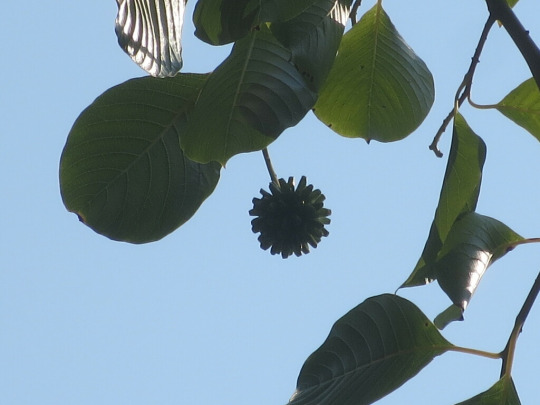


[ID: Three photos, showing different parts of a large tree.
The first photo is zoomed in on high branches with a blue sky beyind them, showing large leaves, and a seed pod hanging down, shaped like a sphere with rounded off square shapes sticking out of it.
The next photo shows the base of the trunk. The bark is light grey with black cracks running up and down, spread faily evenly apart.
The third photo shows a photo of the high branches from the ground, showing the many seed pods and round leaves.
End ID.]
Here's one of the seedlings:
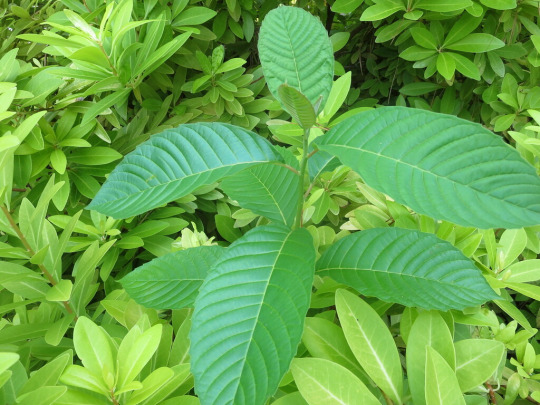
[ID: A photo of a young sapling of the same tree shown above, growing amongst another plant with very light green leaves. The sapling has darker leaves than what it's growing with, with large ribbed, oval-shaped leaves with sparsely toothed edges. End ID.]
Parent tree:
https://www.inaturalist.org/observations/174782393
Offspring:
https://www.inaturalist.org/observations/174777031
https://www.inaturalist.org/observations/174782378
https://www.inaturalist.org/observations/174782387
https://www.inaturalist.org/observations/174782389
I feel like the answer is going to be exceedingly obvious.
0 notes
Text
The majority of plant species (including most ferns and dicots, as well as many monocots) exhibit Type I root hair development, in which every root epidermal cell can potentially differentiate into a root hair (Figure 18.35A). (...) In Type II plants, which include the primitive vascular plants Lycopodium, Selaginella and Equisetum, the basal angiosperm family Nymphaeceae (water lilies), and some monocots, root hairs arise from the smaller cell produced by an asymmetric cell division in the root meristem (Figure 18.35B). (...) In Arabidopsis, for example, the root epidermis consists of alternating files of cells that are either atrichoblasts or trichoblasts (Figure 18.35C). (...) Each root hair cells has a long, fingerlike extension that usually grows from the basal end of the epidermal cell (see Figure 18.35).

"Plant Physiology and Development" int'l 6e - Taiz, L., Zeiger, E., Møller, I.M., Murphy, A.
#book quotes#plant physiology and development#nonfiction#textbook#plant cells#ferns#eudicots#dicots#monocots#epidermis#root hair#lycopodium#selaginella#equisetum#nymphaeceae#water lilies#cell division#brassicaceae#arabidopsis
0 notes
Text
The development of the root system in both monocotyledons and dicotyledons depends on the activity of the root apical meristem and the production of lateral root meristems.
"Plant Physiology and Development" int'l 6e - Taiz, L., Zeiger, E., Møller, I.M., Murphy, A.
#book quote#plant physiology and development#nonfiction#textbook#root system#monocots#dicots#eudicots#plant cells#plant growth#root growth
0 notes
Text
Im trying to grow luffa cylindrica plants for the third year in a row. One of my seedlings turned out to be a mutant! Luffas are dicots, but this one has 3 leaves instead of 2.

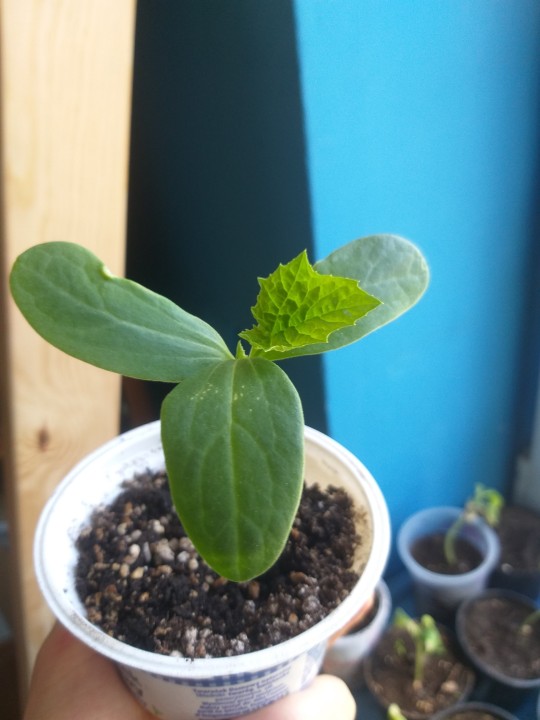
A bit more mature:


1 note
·
View note
Text
the constant thought at the back of my mind that i dont belong here because people are so fucking stupid
#i am trying to study deeep into angiosperms embryology and a girl comes up to me and asks hey are sunflowers dicot or monocot#and im studying so much so deep into it and shes asking me this#shut up!!!!!!!! shut the fuck up tumhe admission kisne diya#i actually dont belong here tbh ive just accepted#still nothing beats first day here i asked this girl what her major was and she asked me whats a major#i love that you are so unaware girl but karne kya aayi ho yaha
18 notes
·
View notes
Text
Metaflora Stats
🍂 Plant #196 🌱
I figured it out in 7 guesses!
🟨🟨🟨🟨🟧🟨🟩
🔥 22 | Avg. Guesses: 6.6
#metaflora
3 notes
·
View notes
Audio
“Aitsu” - Super GALS! - April 1, 2001
92 notes
·
View notes
Text
Something that I've been doing in the past few years is looking at a plant I'm not familiar with the phylogeny of, and then attempting to guess which family it's in by looking at clues like its leaves, flowers, and fruit. (Or order if I'm not able to get a family)
Sometimes I will make an educated guess on something, only for me to look up the answer and go "... I have literally never heard of this family before."
#The upside is that I do like learning about families I'm not familiar with#I can pretty consistently guess Rosaceae now too!#Roses tend to have serrated leaves and their flower have a crafting tissue sort of look to them#With tinsely stamen and pistils and 5-part symmetry#Flowers with 5-part symmetry and have a pinwheel look to them tend to be in Malapighales#A lot of dicots with fused tubular flowers are in Lamiales
12 notes
·
View notes
Text



lmfao
#two sides comic#cerulean cynthesia#maddox kolt#two sides dicot au#artists on tumblr#been a while since anyones posted maddox kolt lmao#my sillies
3 notes
·
View notes
Text

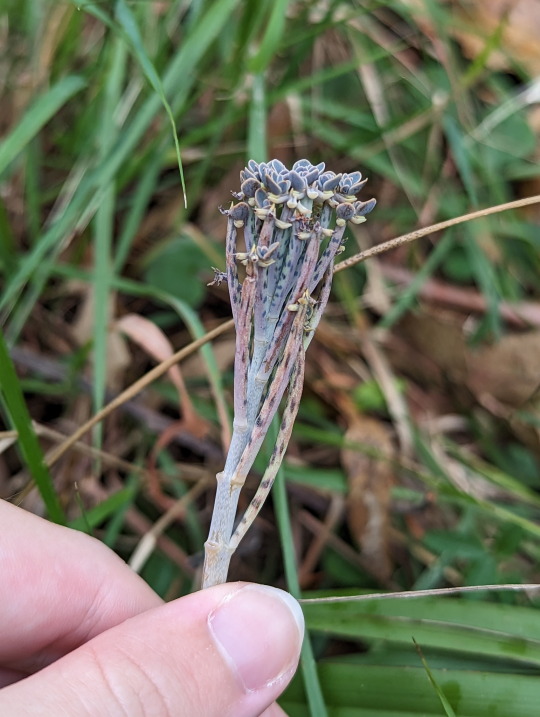
Mother-of-Millions
Kalanchoe delagoensis
20/03/23 - NSW
#Kalanchoe delagoensis#Mother-of-Millions#Kalanchoe#Kalanchoes#Crassulaceae#stonecrops#Magnoliopsida#Dicots#Angiospermae#angiosperms#Flowering Plants#flowers#Tracheophyta#Vascular Plants#Plantae#Plants#botany
349 notes
·
View notes
Text
Dicots has taken up residency inside the blades temple and has claimed dragonsbane for her own.
#delphine and the dragonborn show up to find a feral khajiit squatting and playing with their relics#dicots saga
4 notes
·
View notes
Text
Flowers of Teyvat Masterpost*
Sweet Flower
Particularly fragrant flowers. They can be found easily, even in the dark. Just follow the scent.
Found everywhere in Teyvat, sweet flowers are often used to add a dash of sweetness to culinary dishes. Sweet flowers are urn shaped and have fused petals with five sepals. Interestingly enough, there appears to be a secondary set of petals and sepals beneath the main flower head!
Mondstadt
Cecilia
A beautiful flower with a name that suits its appearance. It only grows where harsh winds blow, and is just as intangible as the true heart of an unbound soul.
Cecilias grow high atop Mondstadt's cliffs in full sun. They have a solitary, star-shaped flower that appears to have six petals and no sepals, but I suspect they are similar to lilies in that they have three petals and three sepals of similar size and color (or "six tepals"). The parallel veins in the leaves are characteristic of a monocot plant.
Small Lamp Grass
A wild grass that emits light at night. Used in cooking to enhance other flavors. Just as the subtle fragrance of wild flowers will not distract a focused person, Small Lamp Grass’ delicate glow will not attract their attention, either, even at night.
It's most distinguishable feature is that it glows, and it seems to grow well in the shade of Mondstadt's old forests. Small lamp grass has a solitary, urn-shaped flower with five petals and five sepals. The parallel veins in the leaves are characteristic of a monocot.
Windwheel Aster
A plant that adores the wind. To the proud children of the wind, or the citizens of Mondstadt, the Windwheel Asters are “the visible winds.”
With petals shaped like a pinwheel, windwheel aster grows in small groups throughout the Mondstadt countryside. It seems to prefer full sun and, like a cecilia, has six tepals. The parallel veins in the leaves are characteristic of a monocot plant.
Liyue
Glaze Lily
An extremely ancient flower that was said to be commonly seen in Liyue. It transforms the memories of the land into its fragrance during florescence. Legend has it that the flower will open at the sound of pure, beautiful music, and that there was once one who loved this flower more than any other. Now, however, the sight of a Glaze Lily in full bloom out in the wild is a rare one indeed.
The glaze lily used to be a common star-shaped flower in Dihua Marsh, but was nearly wiped out during the Archon War. Now, glaze lilies are cultivated in Yujing Terrace and Qingce Village. The glaze lily has five petals and ten sepals. While the common name is "glaze lily", the veining in the leaves shows that the flower is a dicot and, thus, not a true lily.
Qingxin
A translucent white flower that only grows on the highest stone peaks. It eschews the warmth and moisture of the plains to gaze out afar from the solitary mountaintops.
The qingxin flower prefers full sun and is commonly found on mountaintops in Liyue. It has five tepals per flower and an umbellate inflorescence where there are four flowers per stem. The heart-shaped leaves with net-like veins are characteristic of a dicot.
Silk Flower
A crimson flower that blooms like the rainbow clouds in Liyue. It can be made into silky-smooth fabric. Liyue's Feiyun Commerce Guild is a giant in silk and textile manufacturing. Legend has it that Feiyun Commerce Guild has a secret Silk Flower nursery somewhere in the mainland. Nobody in the industry can rival their yield and texture.
The silk flower, which is used to make both cloth and perfume, is found at Wangshu Inn and Yujing Terrace in full sun. It has five petals arranged radially around the center of the flower with ten sepals. A silk flower bush has red, palmate leaves with veining typical of a dicot.
Violetgrass
A small flower with strong vitality. It is said that its downward-blooming flower keeps its fragrance from dissipating.
Found in full sun on the cliffs of Liyue, violetgrass is a medicinal herb that has tubular flowers and vine-like stems. It has four fused petals and four sepals. The net-like veins in the leaves are characteristic of a dicot.
Inazuma
Dendrobium
A vibrant plant that has also been named the "lycoris" by the poets. It was once thought extinct in the Inazuman archipelago, only to re-emerge now upon the battlefields. It is said that it blooms most enchantingly where much blood was spilled.
Though it is very rare and expensive, this plant is regarded as ominous, and thus is little purchased. Rumor has it that these plants are watered using blood. The bloodier and more brutal the battlefield, the more lovely the dendrobium blooms shall be. Inazumans believe that the souls of the fallen shall follow the winding paths of the bloodied dendrobiums into the next life, thus rejoining the eternal elemental cycle.
But as for those who doubt or are perplexed by "eternity," they shall be shackled to the earth, becoming another enchantingly red flower amid the vermillion fields.
The dendrobium flower grows exclusively near battlefields or arenas. Its nickname, "Lycoris", is likely a reference to Lycoris radiata, the red spider lily, which symbolizes death and reincarnation. The dendrobium flower has six petals and six sepals. The net-like veins in the leaves are characteristic of a dicot.
Naku Weed
Even on windless days, this plant will tremble lightly amid the cries of thunder. The part of it that resembles petals are in fact extensions of the leaves meant to protect the fragile flower.
The Naku Weed grows strongly in areas saturated with Electro energy. Due to its great affinity for lightning, it is often used by residents to predict storms. Stories tell that these plants are what the bake-danuki Ioroi stole from the Shogun's very own garden using its powers, before planting them throughout the islands. Even long after its punishment and disappearance, people still speak of Ioroi's many deeds.
Naku weeds are commonly found in areas with strong electro energy. Although they don't appear to have flowers, at first, if you look closely at the central part of the plant, you will see a small bulb protected by an arrow-shaped leaf-like structure. The number of petals and sepals is unknown. The plant does not have visible veins in the leaves, so I'm unsure if it's a monocot or a dicot.
Sumeru
Kalpalata Lotus
Flowers from vines that grow on cliff sides. It is called a lotus only because it has a similar appearance to one. Aside from that, it bears no other similar properties to the lotus.
The kalpalata lotus is a vine-like plant with rotate flowers that grows on Sumeru’s cliffsides in partial shade. It has five petals and five sepals, both a robin’s egg blue. The center appears much like the carpellary receptacle in water lotuses, hence the name. The net-like veins in the leaves are characteristic of a dicot.
Nilotpala Lotus
Growing in the forest wetlands, these plants only bloom at night with flowers as bright as the moon.
The nilotpala lotus is a night-blooming rotate flower with striking blue petals. “Nilotpala” means blue water lily in Sanskrit, but unlike the day-blooming Nymphaea caerulea, the reproductive organs in the center appear more like a lotus’ carpellary receptacle. It has five petals and five sepals, but the only part that the traveler harvests for use is the center. Although it is called a lotus and appears to have the reproductive organs of one, the nilotpala lotus flowers and leaves both rest on the surface of the water, and its leaves have a split, which makes it a water lily. As a water lily, it is neither a monocot nor a dicot, but rather a basal angiosperm.
Padisarah
A holy and noble plant. The conditions for growth in its environment are very demanding. The flower buds can be processed to make valuable spices.
Named for a flower of old long since gone extinct, the padisarah flower has interesting, purple-tipped leaves and crateriform flowers with six petals and six sepals. It seems to prefer full sun, although whether or not the plant can get sunlight within the world of dreams is questionable. The net-like branching veins in the leaves are indicative of a dicot.
Sumeru Rose
Bright and beautiful, these pure purple flowers give off a pleasant fragrance that will give any passerby pause. While some like to call this a type of ''rambler rose'', its relative lack of multiple flowers means that it falls under a different floral classification.
The Sumeru rose has vibrant purple rotate flowers with six petals and six sepals. Sometimes used for culinary purposes, these flowers are sensitive to the Ley Lines of Teyvat and glow in their presence. The parallel veins in the leaves are indicative of a monocot.
Viparyas
A flower without seeds.Once the earth remembers, the Viparyas will bloom.
Viparyas flowers are only found in the world of dreams. It appears to have a solitary white trumpet flower with fused petals and four purple sepals. The net-like veins in the leaves are indicative of a dicot.
*I'm only including the made up flowers and not the flowers that have a real-world counterpart.
Flowers of Mondstadt
Flowers of Liyue
Flowers of Inazuma
Flowers of Sumeru
© All rights reserved by miHoYo. Other properties belong to their respective owners.
#genshin impact#flowers#biology#small lamp grass#cecilias#windwheel aster#violetgrass#qingxin#glaze lily#glaze lilies#silk flowers#silk flower#naku weed#dendrobium#a lot of the names of these flowers make absolutely no sense lmao#windwheel 'aster' meanwhile it has no characteristics of asteraceae...#glaze 'lily' and then it's got a composite flower head and dicot leaves#irl dendrobiums are a type of orchid#like????#not even close#mine
47 notes
·
View notes
Text
From this main root axis, lateral roots develop to form an extensively branched root system (Figure 5.8).

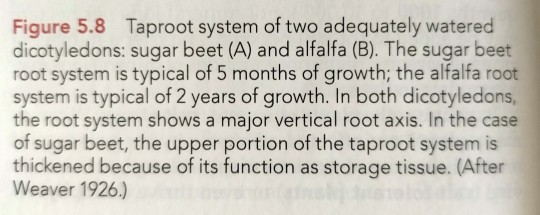
"Plant Physiology and Development" int'l 6e - Taiz, L., Zeiger, E., Møller, I.M., Murphy, A.
#book quotes#plant physiology and development#nonfiction#textbook#root system#dicot#dicotyledon#eudicots#sugar beet#alfalfa#taproot#plant growth#soil water#groundwater
3 notes
·
View notes
Text
if anyone on iNaturalist is familiar with the genus Aesculus, please help confirm that this observation is in fact part of that genus so it doesn't get trapped in Dicots purgatory forever, lol. It was misidentified as a common pawpaw.
#aesculus#iNaturalist#already tagged a few of the top identifiers for that genus#but I'm not sure how many IDs are needed to push it firmly out of Dicots
2 notes
·
View notes